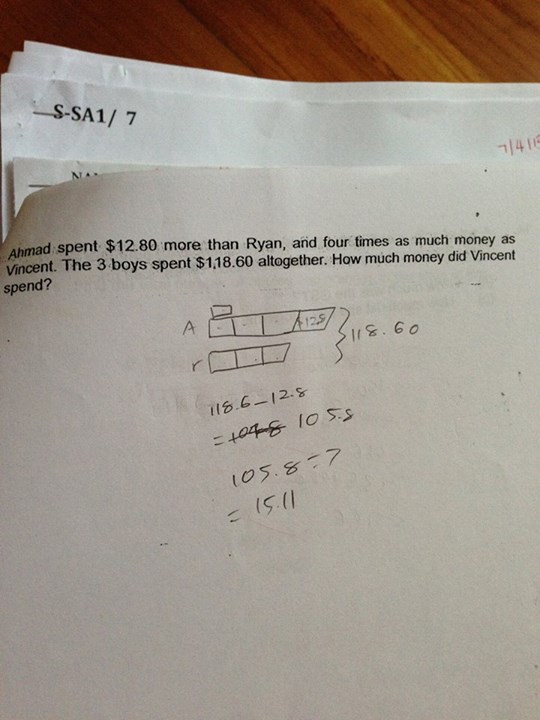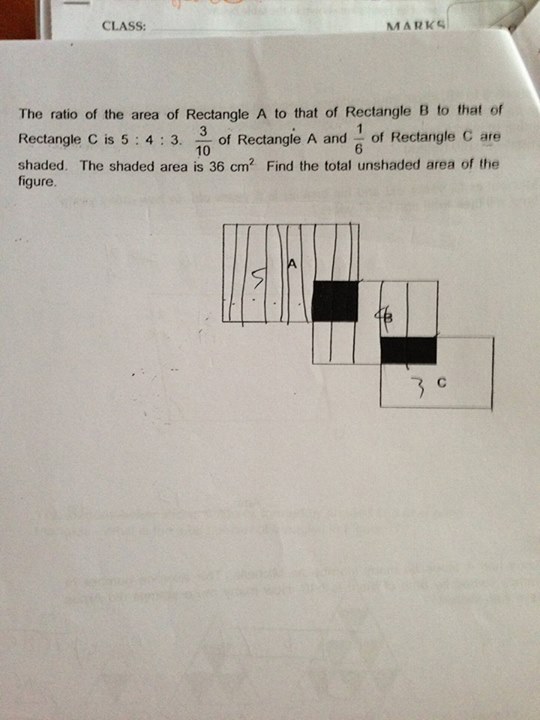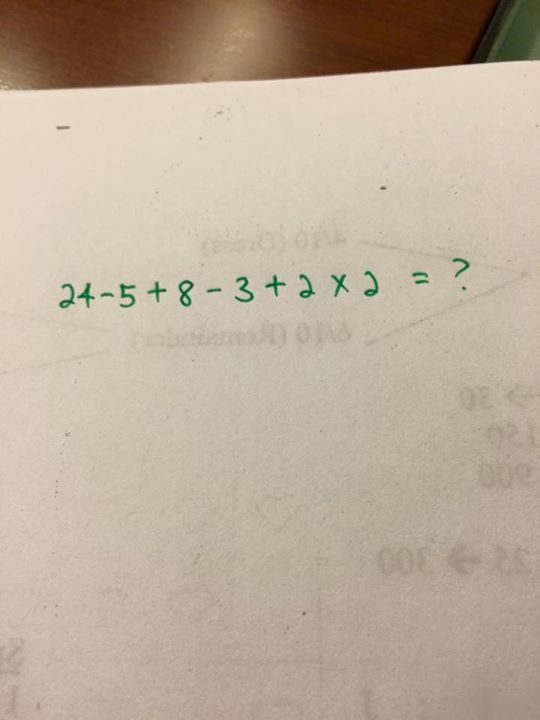
Morning Teachers, these questions were posted on behalf of my sister. please advise on the answers. If possible, I would like teachers to give a few pointers on the rules to take note.

This is a simple question. I used BODMAS to solve and answer is 04. My girl used the method that was taught in school and answer is 28. However the answer sheet is 12. Any good advice for a absolute correct answer / method?



































































